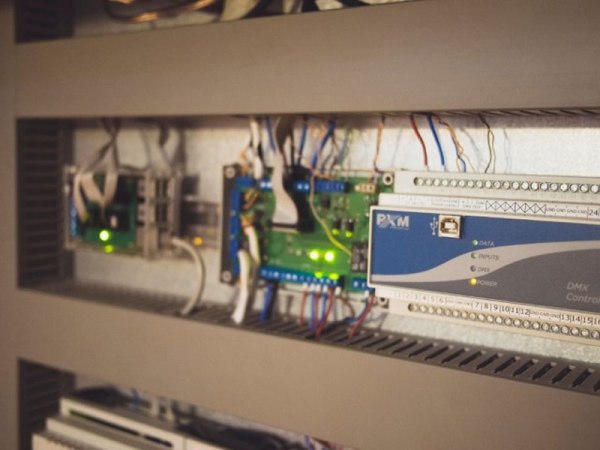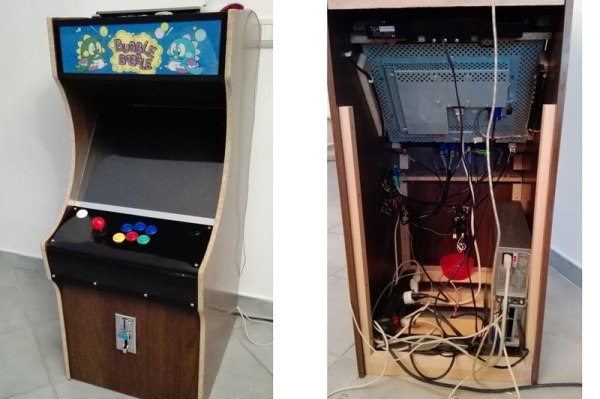A pile of Raspberry Pis isn’t what would spring to mind for most people when building a system to control a large office, but most people aren’t [Kamil Górski]. He decided to use Pis to run the office of his company Monterail when they moved to a larger space. The system they built is one of the largest Pi installations we have seen, controlling the lights, TVs, speakers and door access. It can all be controlled through a web interface, so anyone on the network can turn the lights on or off, check if a room is occupied or send sound and video to the fancy AV system in the conference room. He even hacked a bunch of HDMI switches so that every TV can show the same image if everyone wants to watch the same event. Even the radio station that plays in the lounge is controlled remotely from an employee slack channel.
The system is run on five Pis, one of which acts as a master, while the others are connected to each of the TVs, running Chrome in console mode being remotely controlled through the Chrome Debugging Protocol. That allows anyone on the network to control the display and send content to it. One interesting thing to note: [Kamil] freely admits that this is a bespoke system that couldn’t be easily sold as a product. Nothing wrong with that, but he decided to build in some backups: if the whole system fails, all of the lights, doors, and other devices can still be controlled through old-school switches, keys, and remote controls. Even a full system crash doesn’t render the office unusable. That’s a wide precaution that many people forget in systems like this.

















